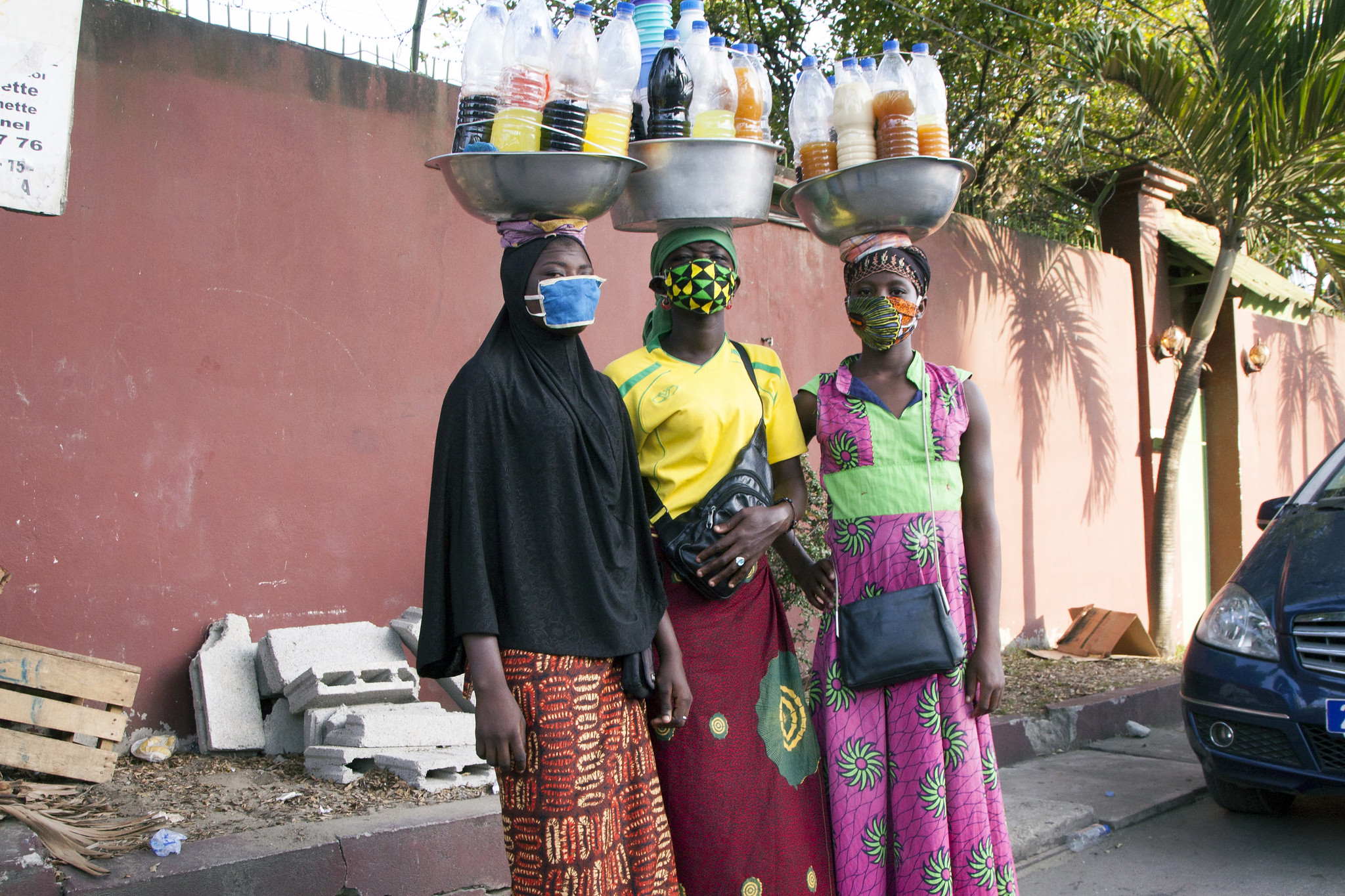Over the last twelve months, a clear body of evidence has emerged to demonstrate the differing impacts of Covid-19 on women, girls, boys, and men. Across global regions, women have experienced substantial economic losses, hugely amplified unpaid care burdens, and a ‘shadow pandemic’ of violence. Girls forced out of education during the pandemic have experienced a range of negative impacts, including vulnerability to child marriage, abuse, and pregnancy. Out of school boys in fragile contexts have faced increased vulnerability to recruitment by armed groups. Meanwhile, commenters note that men’s higher Covid-19 mortality rates may be linked to harmful gender norms that impact negatively on men’s behaviour around health and risk.
However, what has also become increasingly evident is the importance of locating the gender impacts of the pandemic within a broader landscape of social and economic inequalities. Not all genders have been affected in the same ways. Approaches that recognise how gender intersects with biology, economic status, race, disability, age, sexual orientation, geography, immigration status, and religion or belief, as well as other factors such as employment, housing (and homelessness), and environmental and political factors, allow us to more completely understand how the pandemic has exacerbated and reinforced pre-existing inequalities, social norms, and socioeconomic differences.
The evidence on gender, intersectionality and Covid-19
A new resource guide from the Covid-19 Responses for Equity (CORE) Knowledge Translation programme brings together a collection of resources that take an intersectional approach to the impacts of the pandemic. Resources were selected for inclusion because they consider how various factors – including race, ethnicity, age, disability, migration status and sexuality – interact with gender to create different experiences and inequalities around Covid-19. Some resources explicitly discuss ‘intersectionality’ and its broad importance, whereas others look more specifically at gender in intersection with another area or characteristic. For example, the guide includes documents around gender and disability, women and girls and livelihoods, and gender and education. The guide includes peer reviewed journal articles, research reports and evidence reviews; policy briefs, tools and guidance; news articles and blogs; data hubs; and online learning. It should be noted that the majority of resources in the guide focus on the impact of the Covid-19 pandemic on women and girls. There are some resources included that have a focus on men and/or boys, but these were more difficult to find.
What does the evidence tell us?
The resources included in this guide provide clear arguments for the importance of intersectional approaches when examining the impact of the Covid-19 pandemic, and developing responses to ‘build back better’. They also provide learning in a number of areas outlined below.
Key areas of intersectional impact
Resources highlight a number of areas where an intersectional approach is particularly important in the Covid-19 context. These include:
- Gender-based violence (GBV). Increases in GBV have been experienced by particular groups of women and girls, and by lesbian, gay, bisexual, transgender and queer or questioning (LGBTQ+) people.
- Mental health. Some groups are particularly at risk of pandemic-related mental health issues, including women overburdened by balancing work, home, and care activities; children, adolescents, and older adults struggling with social isolation; and people with disabilities and pre-existing mental health conditions. The impact of harmful gender norms may also mean that men are less likely to seek help when feeling isolated or depressed.
- Sexual and reproductive health (SRH) and rights. As health resources have been directed away from routine services, women and girls of reproductive age from the most marginalised populations have faced significant obstacles to accessing SRH services.
- Employment and livelihoods. The most economically vulnerable during and after the pandemic include those working in part-time, informal or self-employed roles. Women and girls in these groups have been disproportionately impacted by the consequences of the economic fallout, such as food insecurity, increased unpaid care work, and child, early and forced marriage.
- Education. An intersectional approach to the pandemic’s impact on education allows us to highlight the disproportionate negative impact on girls, especially girls who are refugees or are from resource-poor and rural areas.
Global and regional insights
The guide includes resources that pull together recommendations and best practice on developing an intersectional response to the pandemic at global level. It also includes learning from specific regions and countries. Examples of this include a paper that examines the intersectional gender dynamics at work within the landscape of Covid-19 in India, a brief highlighting evidence from the African Gender Innovation Lab on Covid-19 and livelihoods, and a webinar on gender and education during the pandemic in Latin America and the Caribbean.
Data collection and analysis
Several of the policy guidance documents included in the guide contain advice and recommendations on data collection and disaggregation that supports greater understanding of the intersectional impacts of the pandemic. Collecting data from diverse sources and disaggregating it not only by sex, but by other characteristics too, is an important step in evidence-based policy making that can support those most impacted as part of the Covid-19 recovery.
Diversity in decision making and leadership
The guide includes resources that draw attention to the importance of diverse decision making and leadership around Covid-19 responses, in order to promote policy and practice informed by the intersectional needs and experiences of affected populations.
Focusing on local knowledge and agency, not just vulnerability
Some of the resources included in the guide argue for the importance of intersectional approaches that move beyond ‘deficit’ or ‘vulnerability’ models in relation to Covid-19. Instead, policy makers, funders and humanitarian actors should focus on meaningful engagement with affected populations, recognising their agency, knowledge and lived experience, in order to develop locally-led and appropriate solutions and strategies.
Learning from previous public health crises
The guide includes resources pulling together learning from previous crises such as Ebola and the Zika virus, in order to demonstrate the challenges faced by those experiencing overlapping forms of oppression, and to help shape effective and transformative responses to Covid-19.
Browse the latest CORE resource guide: ‘Gender, intersectionality and Covid-19’
